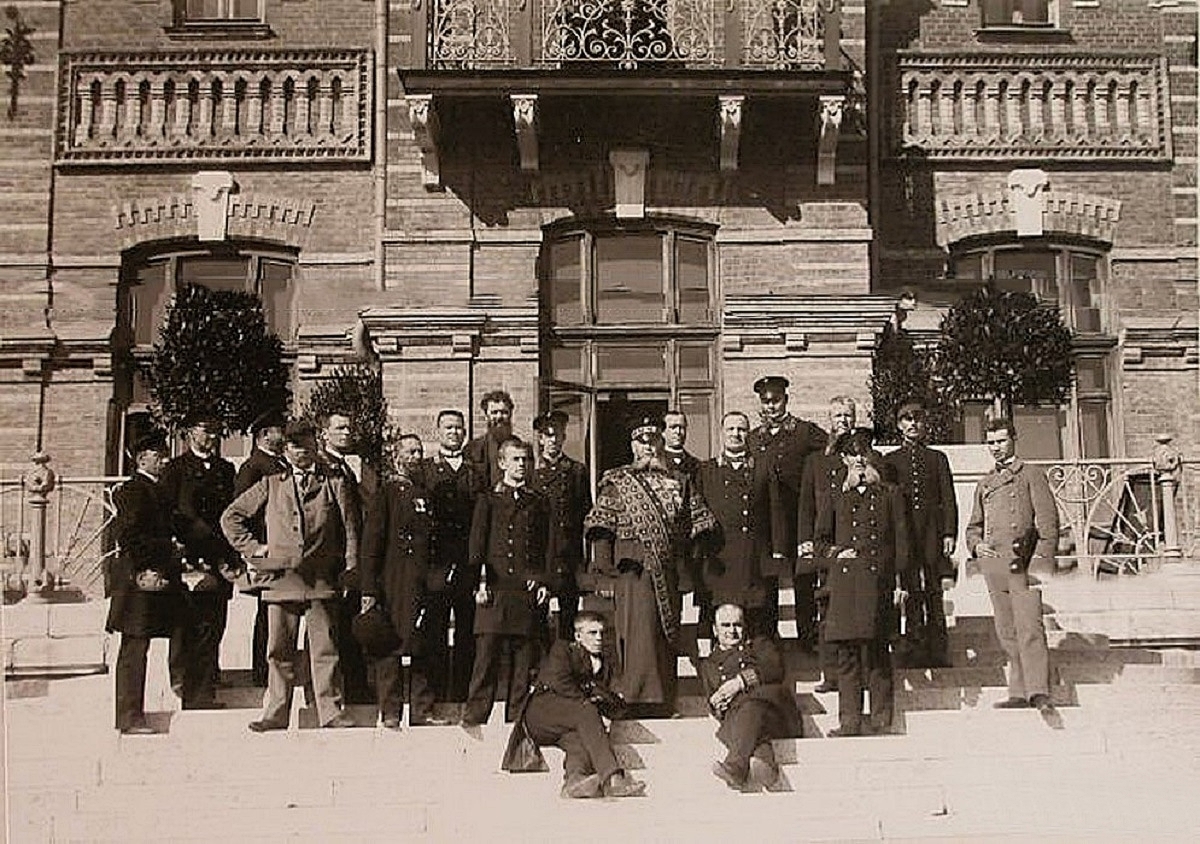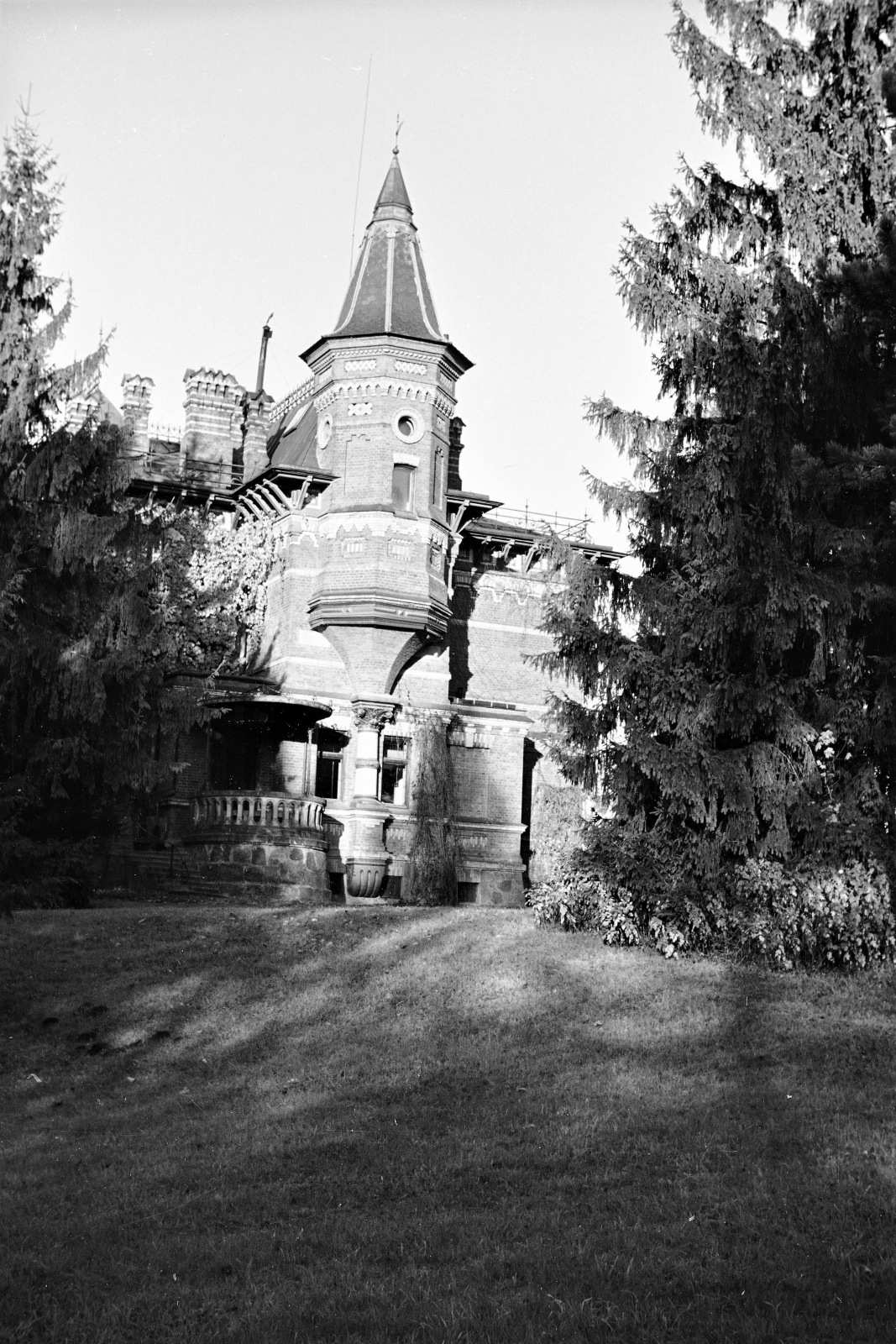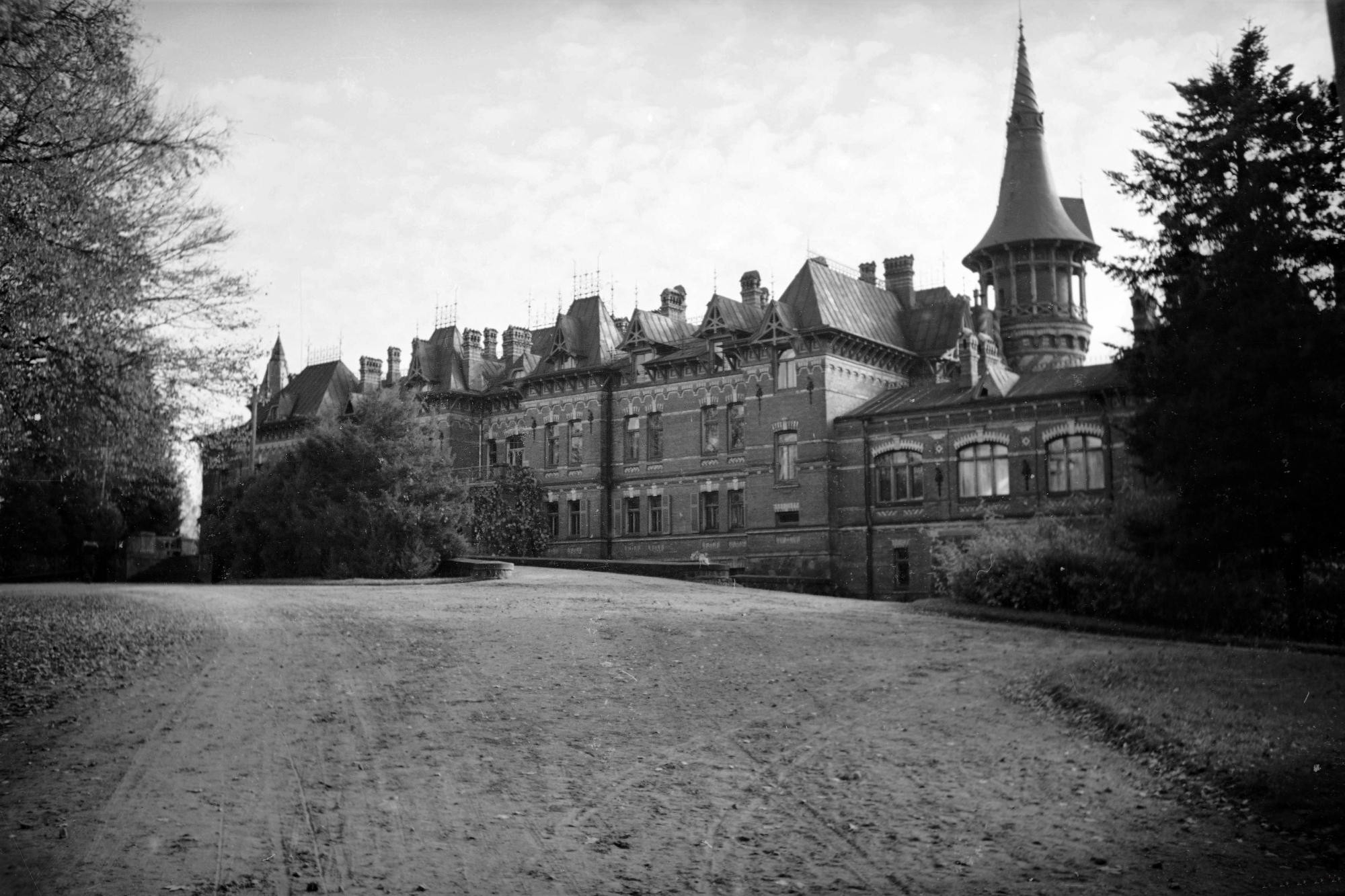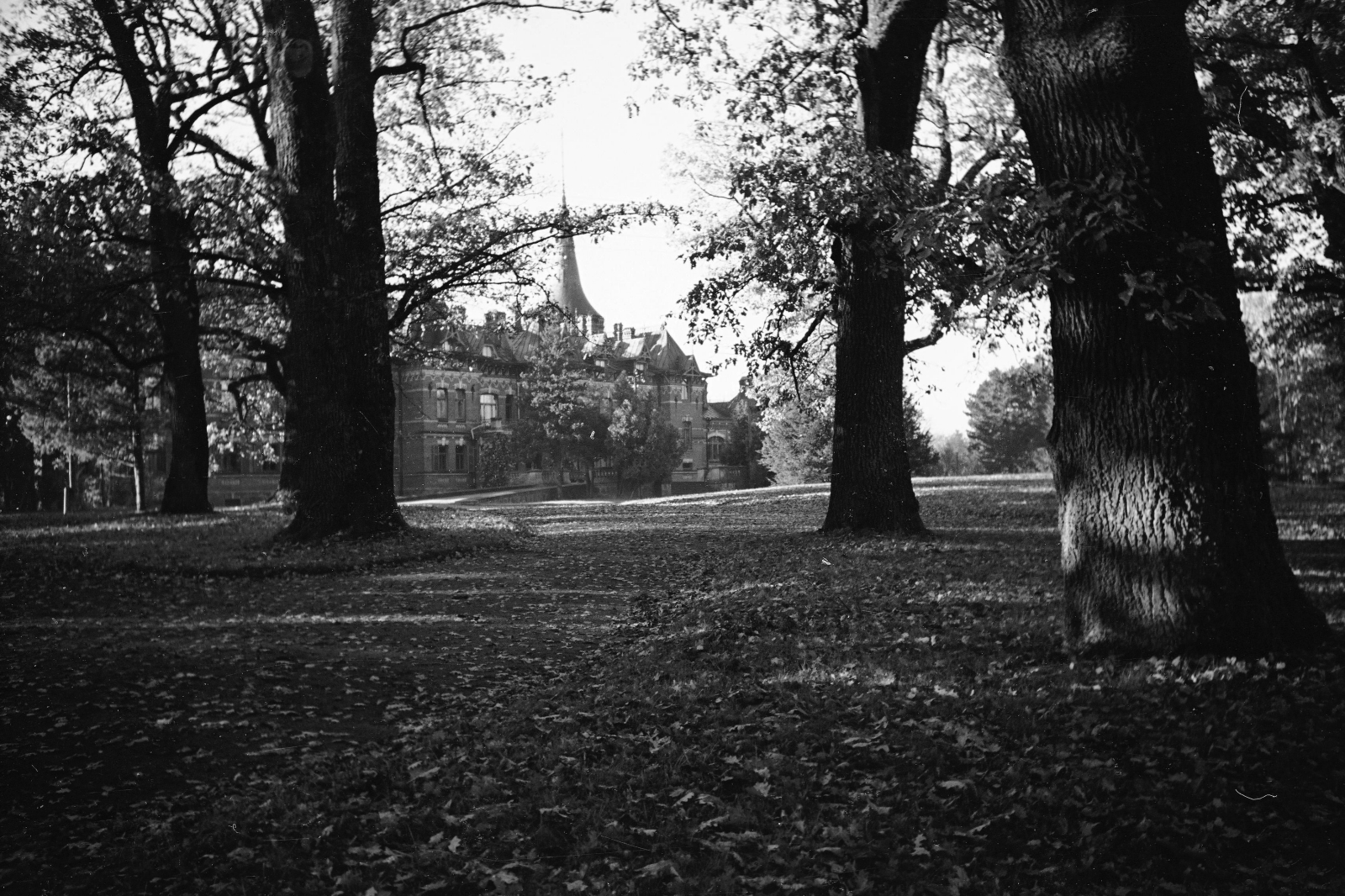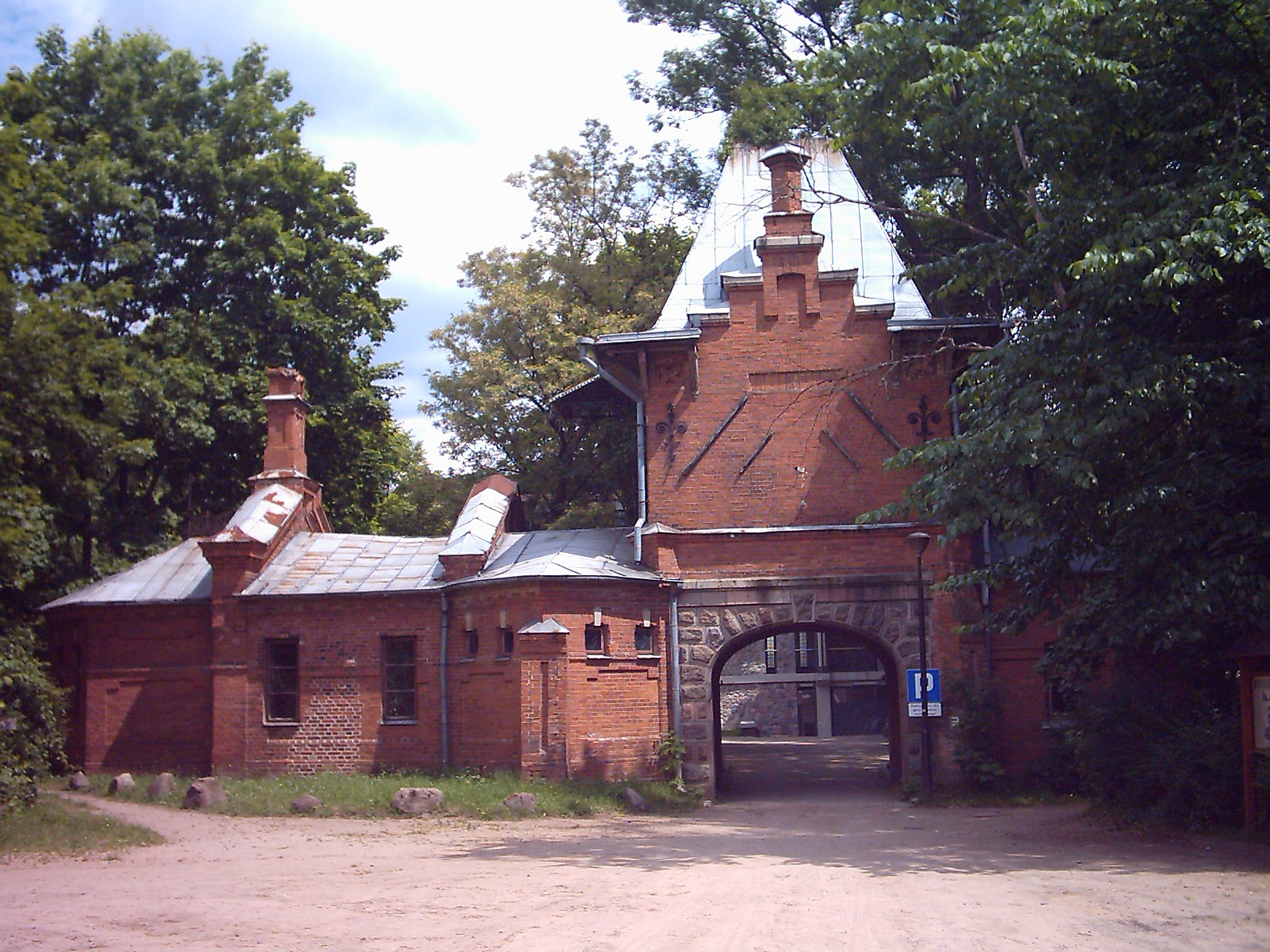For centuries, Bialowieza has served as a hunting centre. It was a unique place, as since the 19th century wild bison could only be found there. In 1888, Tsar Alexander III Romanov decided to make this place his main hunting residence. After five years of intensive work, the Tsar’s palace in Bialowieza was ready
The building was designed by Count Nicholas de Rochefort. The bricks needed for the construction were made locally, while cement and lime were imported from the depths of Russia. The wood used for the interior decoration came from the local area. Construction was completed in 1894
The Tsar’s Palace in Bialowieza. Pre-war years. Source: NAC – National Digital Archive www.nac.gov.pl/

A number of accompanying buildings were erected in the vicinity of the palace. The building was not characterised by one decisive architectural style, it combined many motifs, which is characteristic of eclectic buildings. It had two storeys, an extensive basement and mansard. The building was crowned with two towers. The palace had about 120 rooms, a large part of which were occupied by the tsar’s flats. The chambers were furnished with great artistry and ingenuity. They were full of the most sophisticated decorations. The ceilings and walls were decorated with original ornaments, as well as forest and hunting paintings. The cookers and baths were built from variously coloured tiles
Pre-war years. Source: NAC – National Digital Archive www.nac.gov.pl/
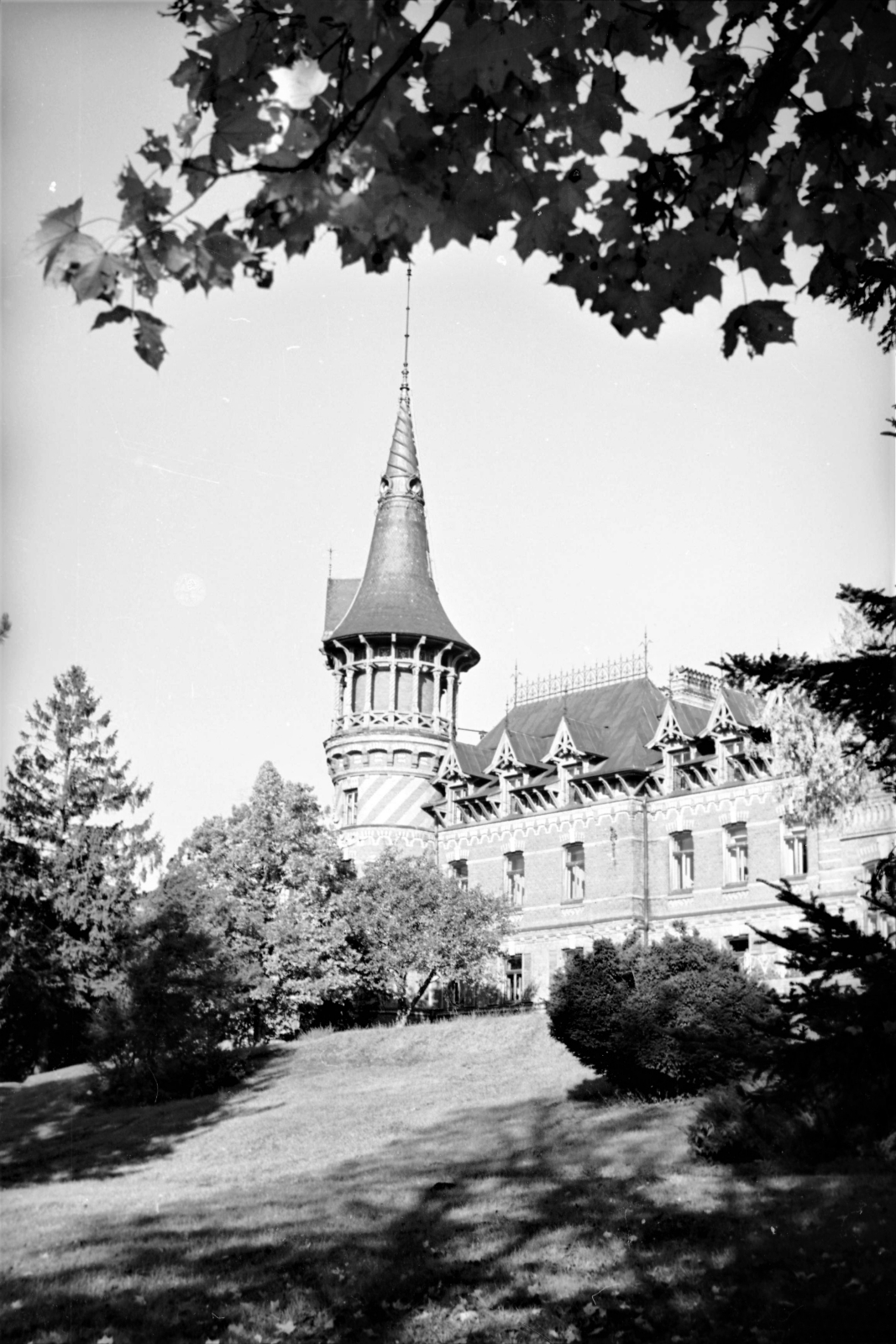
After the death of Tsar Alexander III, the palace was bequeathed to his son and successor Nicholas II, who willingly and often came to Bialowieza to hunt and at the same time to relax surrounded by his closest family. In August 1915, the retreating Tsarist army removed numerous furnishings from the palace to Russia. This was the beginning of the end for the Romanov estate, and soon for the entire dynasty. Shortly thereafter, on the night of 16-17 July 1918, Tsar Nicholas II, Tsarina Alexandra, their five children, four servants and a dog were executed at Ipatiev House. This event ended the reign of the Tsars in Russia. At the end of their reign, the Germans robbed the palace of the remnants of its decoration and ornaments. The palace remained in a state of disrepair
1900 – the Tsar’s family in the palace park during the balloon release. Just below the balloon, with his head upwards, Tsar Nicholas II can be seen, with the rest of the family sitting in the carriage. The palace can be seen in the background. Photo from the album “Царская охота в Беловежской пуще”.

The interwar Polish authorities brought the palace into working order fairly quickly. In 1922, the administration of the newly created Białowieża district started working in it. Some of the chambers were soon converted into representative flats for the head of state. The building underwent a complete overhaul and once again shone as before. The left wing of the palace housed the Pushcha Museum and a scientific library. In September 1929, the State School for Foresters opened its doors in the palace. President Mościcki visited Białowieża for the first time in January 1930. Since then, the tradition of hunting for the head of state in the Białowieża Forest was renewed. Shortly before the outbreak of the Second World War, the palace partially housed a war hospital, which was evacuated eastwards in the first half of September 1939
The Tsar’s Palace in Bialowieza at the turn of the 20th century. Photo: Public domain, via Wikimedia Commons
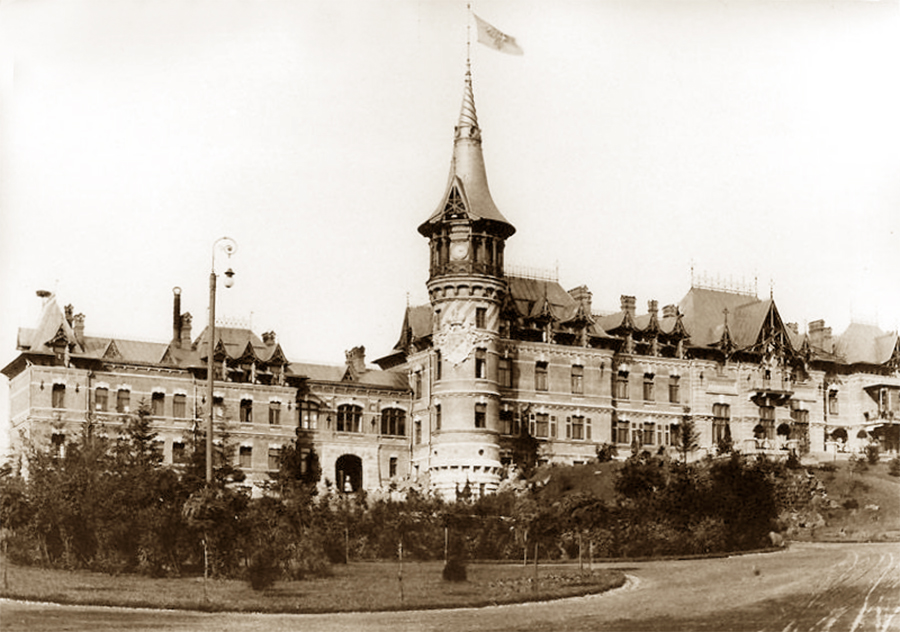
At the beginning of the Soviet occupation, the beginnings of a scientific centre were established in the palace. Subsequent hosts in the palace – the Germans – set up a special headquarters in the palace to fight partisan movements in the Białowieża Forest region. Leaving Białowieża, on the night of 16-17 July 1944, they set fire to the palace, where, in addition to the furnishings, they burnt down, among other things, the collection of Białowieża bee-keeping, the insect collection and the herbarium of vascular plants created by Professor Józef Paczoski. The library and a collection of plates and slides also suffered. The ruins of the palace stood for several years. During this time, there was a discussion about what to do with them. The final decision was made in 1958. The Minister of Forestry and Wood Industry earmarked the ruins for demolition. The work was completed in mid-1962
The only remnant of the palace today is the entrance gate to its kitchen and utility area. Some of the buildings accompanying the main structure have also survived
Source: encyklopedia.puszcza-bialowieska.eu
Read also: Architecture | History | Palace | Villas and residences | Russia


